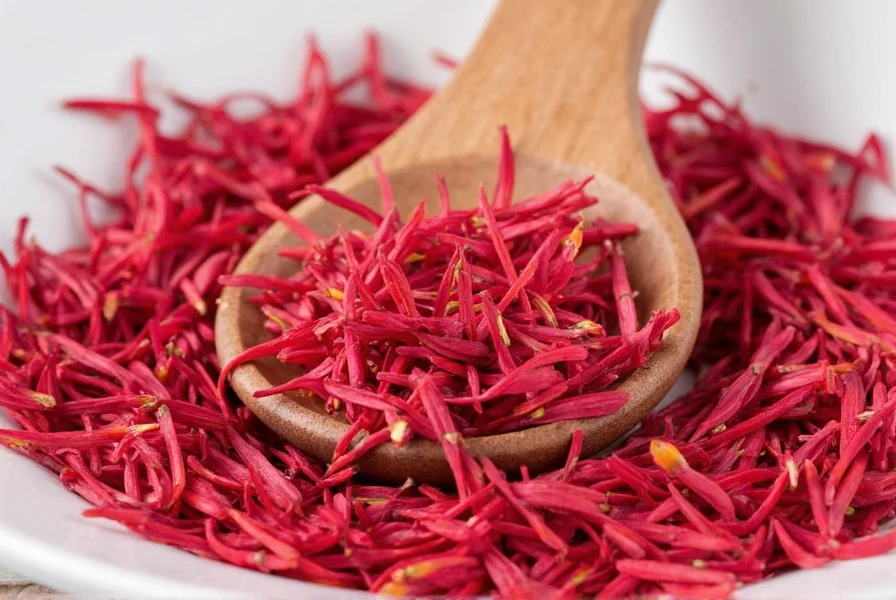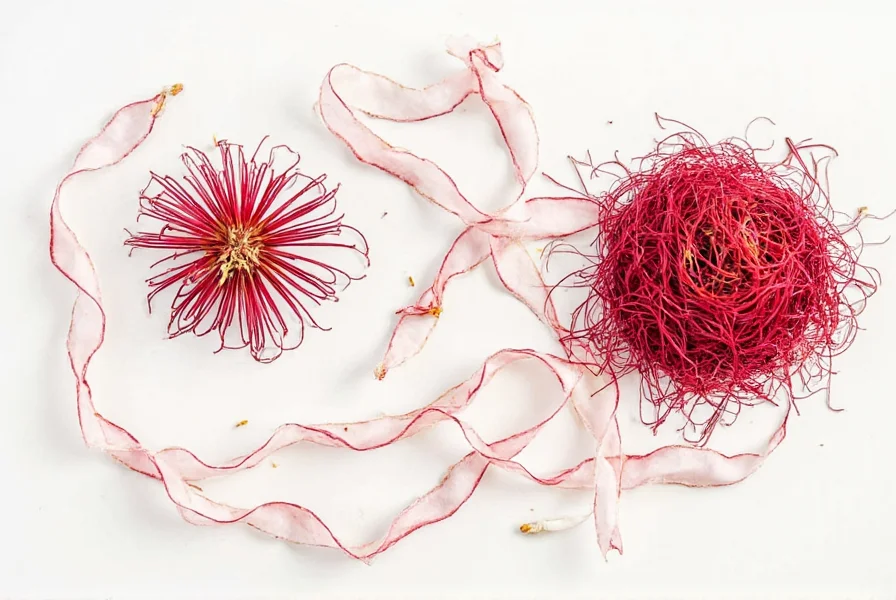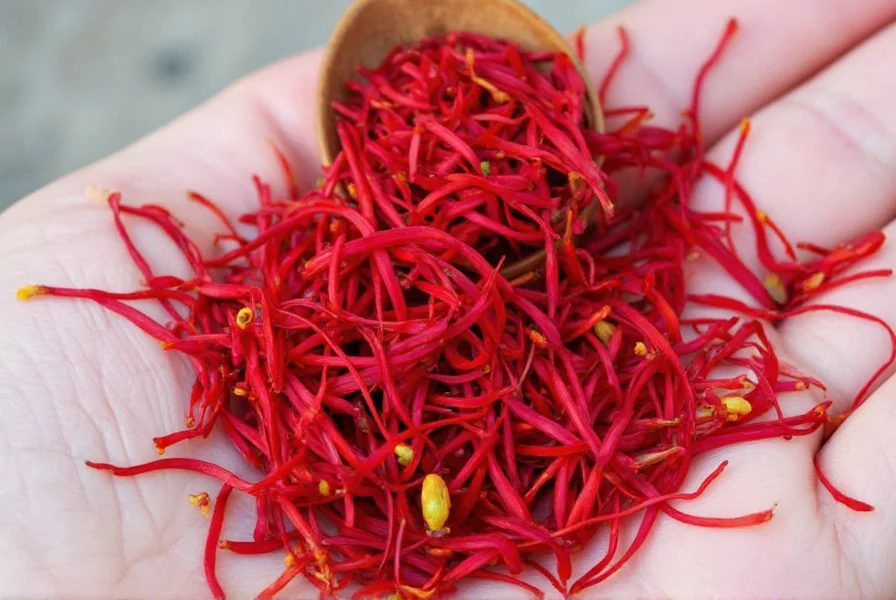Saffron's journey from flower to spice represents one of agriculture's most fascinating processes. Unlike most spices that come from seeds, bark, or roots, saffron is derived from the female reproductive parts of a specific crocus flower. The Crocus sativus, commonly known as the saffron crocus, is a sterile triploid that cannot reproduce naturally and must be propagated by corms (bulb-like structures).
The Saffron Crocus: Nature's Precious Gift
The saffron crocus blooms for just one to two weeks each autumn, typically between October and November depending on climate. Each purple flower contains three vivid crimson stigmas—the thread-like structures that become saffron after harvesting and drying. These stigmas contain the compounds crocin and picrocrocin, which give saffron its distinctive golden color, bitter flavor, and unique aroma.

Harvesting Saffron: A Labor of Patience
Harvesting saffron requires extraordinary precision and timing:
| Harvesting Stage | Time Required | Yield per Flower |
|---|---|---|
| Flower blooming | 1-2 weeks annually | 1 flower per corm |
| Stigma extraction | 15-20 seconds per flower | 3 stigmas per flower |
| Drying process | Approximately 12 hours | ~20% weight reduction |
| Total for 1g saffron | ~40 hours labor | 150-200 flowers |
Workers must harvest the flowers early in the morning when they're still closed to protect the delicate stigmas from sun damage. Within hours of picking, workers carefully extract the three stigmas from each flower by hand—a process that requires remarkable dexterity. The stigmas are then dried using traditional methods that preserve their chemical compounds while reducing moisture content to about 12%.
Why Saffron Commands Premium Prices
The extraordinary labor requirements explain saffron's status as the world's most expensive spice. Producing just one pound of saffron requires approximately 75,000 flowers and 400 hours of manual labor. This intensive process creates significant barriers to production scaling, maintaining saffron's premium market position.
When evaluating saffron quality, consumers should look for deep red threads with minimal yellow style (the connective tissue between stigma and ovary). High-quality saffron from flower sources will have a strong aroma and release a rich golden hue when placed in warm water—a test that distinguishes genuine saffron from common adulterated products.
Historical Significance of Saffron Cultivation
Saffron cultivation dates back over 3,500 years, with early records from Bronze Age Greece. Ancient civilizations valued saffron not only as a spice but also as a dye, medicine, and ritual offering. The spice became so valuable that during medieval Europe, saffron theft was punishable by death.
Today, Iran produces approximately 90% of the world's saffron, followed by smaller producers in Spain, India, and Greece. Each region develops distinctive saffron characteristics based on local climate, soil conditions, and traditional processing methods—factors that create subtle variations in flavor profile and coloring strength among different saffron from flower sources.
Identifying Genuine Saffron
Consumers seeking authentic saffron should understand these key identification markers:
- Appearance: Deep crimson threads with slight trumpet shape at one end
- Aroma: Distinctive hay-like fragrance with subtle metallic notes
- Water test: Releases golden-yellow color gradually (not immediately)
- Taste: Bitter flavor followed by slight sweetness
Be wary of products labeled as saffron that appear bright red throughout (may be dyed) or release color too quickly in water (likely adulterated with safflower or other substitutes). Genuine saffron from flower sources maintains its quality when stored properly in airtight containers away from light.

Common Misconceptions About Saffron
Several myths persist about saffron and its floral origins:
- Myth: Saffron comes from multiple flower species
Fact: Only Crocus sativus produces true saffron - Myth: All red spice threads are saffron
Fact: Many products use safflower or turmeric as cheaper substitutes - Myth: Saffron's color comes from the flower petals
Fact: The color compounds reside exclusively in the stigmas
Conclusion: The Delicate Balance of Nature and Labor
Saffron's journey from flower to spice represents a remarkable intersection of botanical specificity and human craftsmanship. The Crocus sativus flower's brief blooming period and the intensive hand-harvesting process create a spice that continues to command respect and premium value across global culinary traditions. Understanding saffron from flower perspective helps consumers appreciate why this ancient spice remains so valuable in modern markets and how to identify authentic products that honor this delicate harvesting tradition.
What specific flower produces saffron?
Saffron comes exclusively from the Crocus sativus flower, also known as the saffron crocus. This specific autumn-blooming crocus produces the red stigmas that become saffron after careful harvesting and drying.
How many flowers are needed to produce one gram of saffron?
It takes approximately 150-200 Crocus sativus flowers to produce just one gram of dried saffron. Each flower yields only three stigmas, which must be carefully hand-harvested during the brief autumn blooming season.
Why is saffron from flower sources so expensive?
Saffron's high cost stems from its labor-intensive harvesting process. Each stigma must be hand-picked from the flower within hours of blooming, requiring about 40 hours of labor to produce just one gram of saffron. The seasonal nature of the crocus bloom and low yield per flower contribute to its premium price.
How can you tell if saffron is genuine?
Genuine saffron has deep red threads with a slight trumpet shape, a distinctive hay-like aroma, and releases a gradual golden color in warm water (not immediate). It should taste bitter initially followed by slight sweetness. Be wary of products that appear uniformly bright red or release color too quickly, as these are likely adulterated.
Does saffron come from the petals of the flower?
No, saffron does not come from the petals. The valuable saffron threads are the three red stigmas (female reproductive parts) found in the center of the Crocus sativus flower. The purple petals have no culinary value and are discarded during harvesting.











 浙公网安备
33010002000092号
浙公网安备
33010002000092号 浙B2-20120091-4
浙B2-20120091-4